How to Fix Unknown Software Exception (0xc06d007e)
Several Windows users have been reporting that they are bothered by ‘The exception unknown software exception (0xc06d007e)‘ error message. Most affected users are saying that the same message is popping up constantly and will return even if they close it conventionally or by using Task Manager. The issue is not exclusive to a certain Windows version since it’s confirmed to appear on Windows 7, Windows 8.1 and Windows 10.
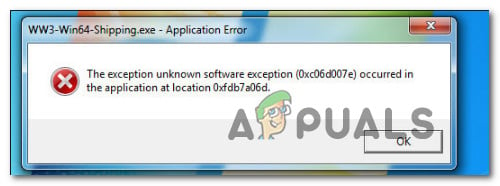
What is causing the Unknown Software Exception (0xc06d007e) error?
We looked into this particular issue by analyzing various user reports and the repair strategies that are commonly being used to fix this particular error message. Based on our investigations, there are several different scenarios that might lead to this particular issue.
Here’s a list of culprits that might produce the 0xc06d007e error:
- Corrupted WU function – If you’re encountering this error while installing an update, this particular issue is most likely caused by a corrupted WU function. In this case, you should be able to resolve the issue automatically by running the Windows Update troubleshooter.
- 3rd party AV interference – An overprotective AV suite can also be responsible for this particular error. Several users that have been encountering this issue on computers that came by default with a bloatware AV have reported that the issue was fixed after they installed the 3rd party suite completely.
- 3rd party application interference – There are other 3rd party applications (VPN clients, Tunneling software) that might cause this particular error code. If this scenario is applicable, you should be able to resolve the issue by achieving a clean boot state.
- System file corruption – System file corruption can also be responsible for this error. Especially if you’re seeing persistent error prompts are random intervals. In this case, you can resolve the corrupted files with utilities like SFC and DISM or you can refresh all Windows components with a clean install or repair install.
If you’re currently struggling to find a viable fix for the same error, this article will provide you with several troubleshooting guides with the potential of resolving the issue. Down below, you’ll discover a series of potential fixes that other affected users have successfully used to resolve the issue.
If you want to be as efficient as possible, follow the potential fixes below in the same order that we featured them – they are ordered by difficulty and the likelihood of being successful. Regardless of the culprit that’s causing the error in your particular scenario, you should eventually encounter a fix that will resolve the issue for you.
Let’s begin!
Method 1: Running the Windows Update troubleshooter (if applicable)
If you’re encountering this issue when trying to install a Windows update, chances are you’re actually dealing with a corrupted WU function, folder or dependency. In this case, you should be able to resolve the issue by running the Windows Update troubleshooter.
This utility incorporates a selection of popular fixes that are known to resolve most issues related to the WU (Windows Update) component. Upon starting this troubleshooter, the utility will scan Windows Update for any evidence of inconsistencies.
In the event that an issue is discovered, it will then recommend an appropriate fix for the issue that you’re dealing with.
Here’s a quick guide on running the Windows Update troubleshooter:
- Press Windows key + R to open up a Run dialog box. Then, type ‘ms-settings:troubleshoot’ and press Enter to open up the Troubleshooting tab of the Settings app.
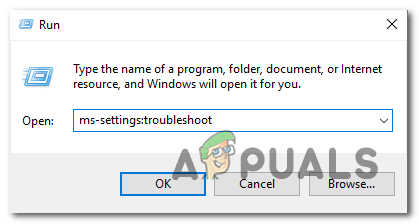
Opening the Troubleshooting tab of the Settings app via a Run box - When you’re inside the Troubleshooting tab, scroll down to the Get up and running tab, then click on Windows Update and click on Run the troubleshooter from the newly appeared box.
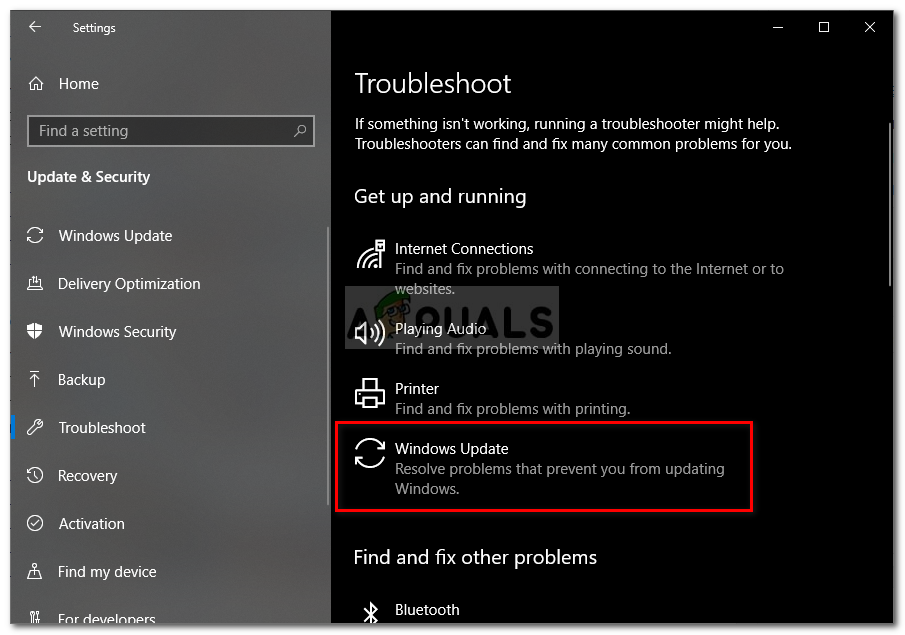
Running Windows Update Troubleshooter - After you start the utility, the troubleshooter will analyze the Windows Update for any issue.
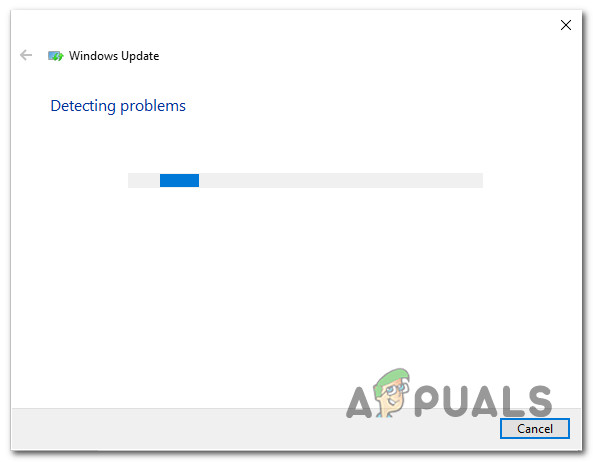
Detecting problem with Windows Update - If an issue is identified, click on Apply this fix and then follow the on-screen instructions to apply the recommended repair strategy.

Apply this fix Note: If no viable repair strategy is identified, move down to the next method below.
- If a repair strategy is applied, restart your computer and see if the issue has been resolved at the next system startup.
If you’re still seeing the 0xc06d007e error when trying to install an update or this method wasn’t applicable, move down to the next method below.
Method 2: Uninstalling 3rd party antivirus (if applicable)
Several affected users have reported that they managed to resolve the issue by uninstalling their 3rd party security scanner. As it turns out, McAfee and Kaspersky (there are probably others) are commonly reported as being capable of triggering the Unknown Software Exception (0xc06d007e) error – especially in situations where they came preinstalled on the computer (bloatware).
If this scenario is applicable, you should be able to resolve the issue by uninstalling the problematic AV suite. Here’s a quick guide on doing this without leaving behind any leftover files that might produce the same error message:
- Press Windows key + R to open up a Run dialog box. Then, type ” appwiz.cpl” and hit Enter to open up the Programs and Feature menu.

Type appwiz.cpl and Press Enter to Open Installed Programs List - Inside the Programs and Features window, scroll down through the list of applications and find the antivirus suite that you suspect might be causing the issue.
- Once you manage to locate the problematic AV, right-click on it and choose Uninstall from the newly appeared context menu.
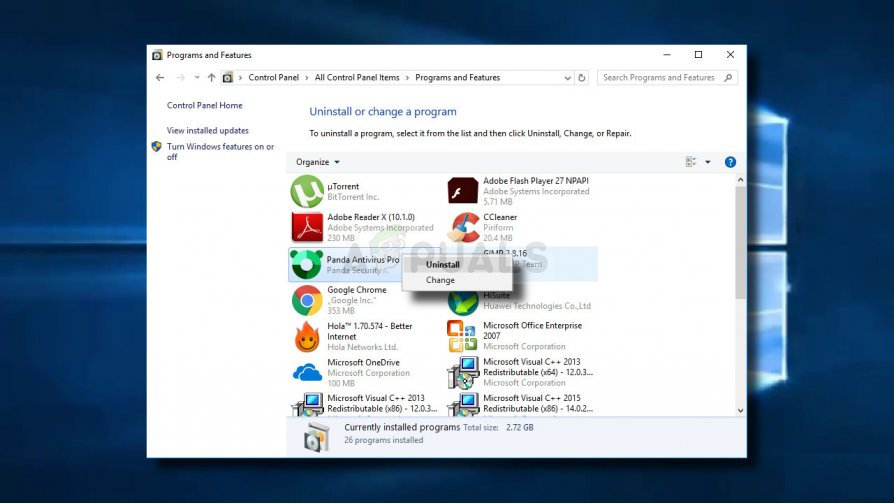
Uninstalling antivirus tool - Inside the uninstallation screen, follow the on-screen instructions to complete the process.
- Follow this article (here) to ensure that you’re not leaving behind any remnant file that can trigger the same error in the future.
If the same Unknown Software Exception (0xc06d007e) error is still occurring, move down to the next method below.
Method 3: Achieving a Clean Boot State
Another likely possibility is that a different 3rd party application that you haven’t yet identified is causing the issue. Since there are countless applications that might trigger the 0xc06d007e error, the best way to go about resolving the issue is to boot in a clean boot state.
This procedure will start your computer without any 3rd party services or applications that might trigger the error. If the error message no longer occurs while your computer is in clean boot, it’s clear that you’re dealing with a conflicting application.
In what follows, you’ll learn how to identify the conflicting application by booting in clean boot mode:
- Open a Run dialog box by pressing Windows key + R. Next, type “msconfig” and hit Enter to open up the System Configuration menu. If you’re prompted by the UAC (User Account Control), click Yes to grant administrative privileges.
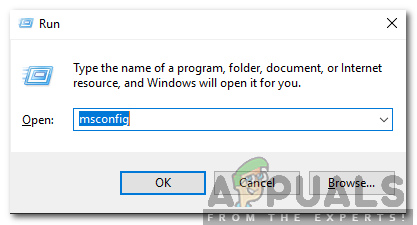
Typing in msconfig and pressing enter - Inside the System Configuration window, click on the Services tab from the top of the menu, then check the box associated with Hide all Microsoft Services. This procedure will exclude all Windows services from the list.
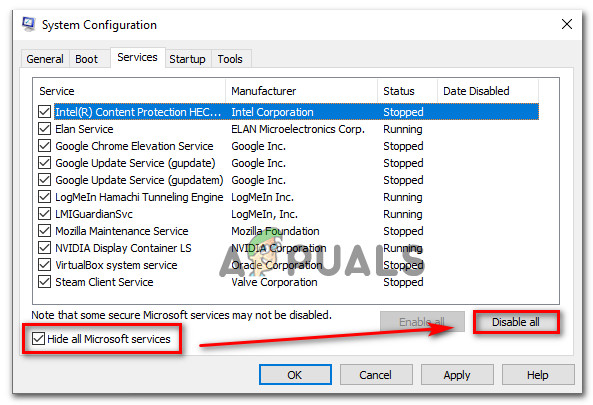
Disabling all non-Microsoft startup items - Once all essential services have been excluded from the list, click on Disable all button. This will prevent all 3rd party services from being called at the next computer startup.
- Once you’re done with the Services tab, move over to the Startup tab and click on Open Task Manager.
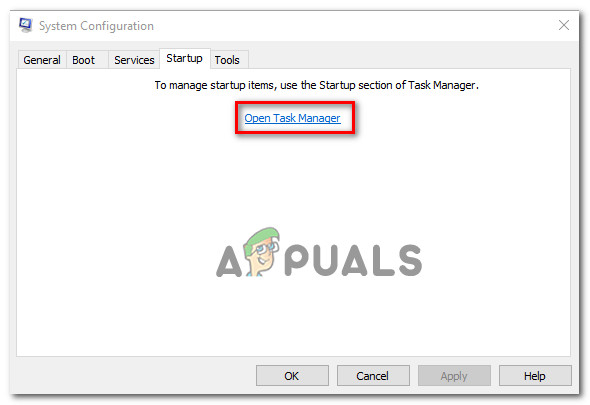
Opening the Startup items window via Task Manager - In the Startup tab of Task Manager, systematically select each startup service and then click on the Disable button in the bottom section of the screen. This will prevent each startup service from running at the next system startup.
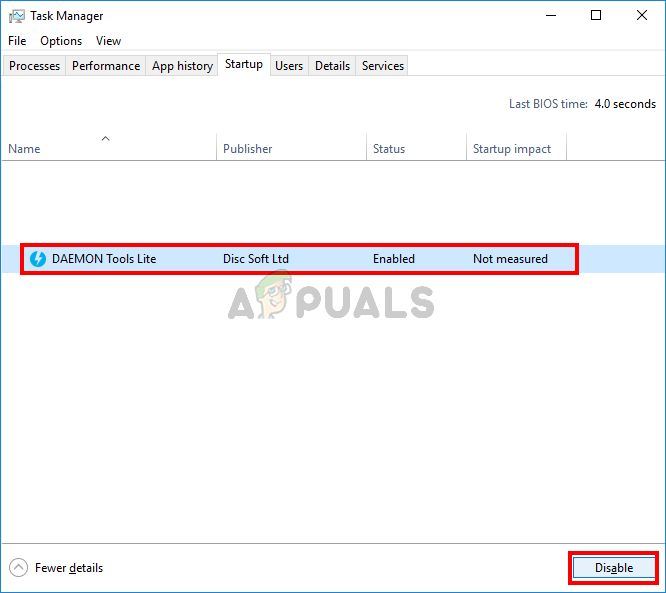
Disabling Apps from Startup - Once you got this far, you have effectively achieved a clean boot state for your next computer startup. Take advantage of it by restarting your computer.
- Wait until the next startup sequence is complete, then see if the Unknown Software Exception (0xc06d007e) error is still occurring.
- If it’s not, systematically re-enable each item you previously disabled (inverse the instructions above) and restart periodically until you manage to identify the culprit.
- Once you figure out which application is causing the issue, uninstall the application responsible for the issue.
If the issue didn’t allow you to resolve the issue, move down to the next method below.
Method 4: Running the SFC and DISM scans
A real possibility that you should consider if none of the potential fixes above have worked is system file corruption. In most cases, you will encounter persistent Unknown Software Exception (0xc06d007e) error after a security scanner has ended up quarantining an item belonging to a driver or an OS dependency.
In situations like this one, you should be able to resolve the issue by using a couple of built-in utilities capable of fixing system file corruption. DISM (Deployment Image Servicing and Management) and SFC (System File Checker) are two types of utilities capable of repairing system files.
But there are major differences between how the tools operate – DISM relies on WU to replace corrupted files with healthy copies while SFC uses a locally cached archive or system files.
Since DISM is usually used in situations where SFC is not able to fix the problem completely, we advise you to perform both scans on your computer to eliminate any sort of system file corruption.
Here’s a quick guide on performing DISM & SFC scans:
- Open a Run dialog box by pressing Windows key + R. Next, type ‘cmd’ and press Ctrl + Shift + Enter to open up an elevated Command Prompt. When you’re prompted by the UAC (User Account Control), click Yes to grant admin privileges to the CMD window.

Running Command Prompt as an administrator - Inside the elevated Command prompt, type the following commands and press Enter to initiate an SFC scan:
sfc /scannow
Note: Keep in mind that you should not stop the scan by any means once the procedure has been started. Doing so will produce additional disk logic errors that will affect your system even further.
- Once the scan is finished, close the elevated Command Prompt and restart your computer.
Note: Keep in mind that some errors might still have been fixed even though the final log didn’t report anything. SFC is known to fail to report instances where some files have been replaced. - At the next startup, follow step 1 again to open yet another elevated Command Prompt. Next, type the following command to initiate a DISM scan:
DISM /Online /Cleanup-Image /RestoreHealth
Note: You’ll need a reliable internet connection before initiating this procedure. DISM uses WU to download healthy equivalents for the corrupted files that need to be replaced.
- Once the process is complete, restart your computer once again and see if the issue has been resolved at the next system startup.
If the same Unknown Software Exception (0xc06d007e) error is still occurring, move down to the next method below.
Method 5: Performing a repair install
If none of the methods above have allowed you to resolve the issue, it’s very likely that your system is suffering from an underlying system corruption problem. In this case, you should be able to resolve the issue indefinitely by resetting all Windows components (including all booting-related processes).
You can do a clean install (here) if you want, but an even more effective approach would be to perform a repair install. This procedure will reset all Windows components while leaving all your personal files (including applications, personal media, documents, etc.) intact.
If you want to go for a repair install, follow the instruction in this article (here).




